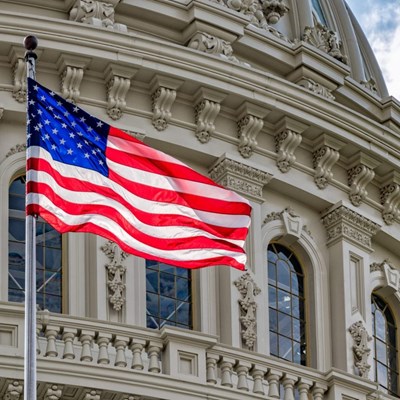Lodes says innovations in payments, such as mobile wallets, thumbprint ID, and online payments, are growing in the government sector, and government departments need ISVs who can integrate them with their legacy systems. More importantly, however, ISVs need to find ways to provide software for government so that it that delivers the greatest value, increases cost-effectiveness, and provides better experiences for users. Lodes says this is a key to success in this market: “Look beyond the technology to focus on the outcomes your solution can offer them.”
Developing software for government applications and navigating procurement process can be nothing short of challenging for ISVs.
Biggest Opportunities May Be Outside the Office Building
Lodes says First American, which has two government-focused subsidiaries and an ISV team that specializes in government and ancillary services, often sees the biggest opportunities to provide software for government beyond the municipal or county office. “Some ISVs have tunnel vision,” Lodes says. “They don’t see the opportunity in areas like parking, ticketing, and land survey management. The opportunities to work with the outer circle are really exciting to us.”
Many local or county governments with parking lots and garages, for example, would benefit from modern, efficient processes. Your solution that manages parking and accepts payments can reduce labor expenses, increase revenues, and provide a better user experience. Lodes says, your success in one area may even lay the groundwork for a partnership that can pave the way for you to provide solutions to other departments.
Don’t Underestimate What You’re Dealing with, Technology-wise
Lodes says if you haven’t dealt with government clients before, prepare yourself for the technology — or lack of technology — that’s in use there. Because technology upgrades can be disruptive and citizens in a municipality who need licensing or government services generally aren’t open to change, technology upgrades don’t occur as often as in other verticals.
Lodes says your government prospects are looking for ways to increase efficiencies and enhance services. For example, they may want a mobile solution for line busting on the last day real estate taxes are due, but their current system doesn’t give them mobile capabilities. ISVs will be successful if they can start with the legacy technology in place and move the government agency forward to enable modern processes.
Change the Way You Approach Sales
When you are selling software for government applications, also be prepared for a different approach to making a sale. Outside the government vertical, selling into the self-storage market, for example, you learn the industry and its pain points, attend trade shows, identify prospects, meet with decision makers, and get a final decision from the CEO. The entire process is fairly quick and streamlined, usually taking one to three months.
When you deal with a government entity, however, you will encounter a very long, structured process. You still should attend government industry shows and identify prospects, but you then need to learn who the influencers are in that government structure, for example, elected officials serving on an information technology committee, and begin to develop relationships with them.
You will need to determine when the county or municipality is going to issue a request for proposal (RFP), and follow procedures set by that government entity to receive an invitation to submit. The RFP may have several iterations, which you will need to respond to, and the process can take months. “The RFP process is labor-intensive,” says Lodes. “We have one individual at First American who does nothing but respond to RFPs, and that person is very busy.”
If your proposal is successful, you will be invited to present during a second round. The presentation requires that you bring technical resources to explain your solution, the benefits it will provide, how you will keep data and networks secure, and ROI. These on-site meetings can be beneficial, says Lodes, because they give you the opportunity to see the technology the county or municipality has in place, which may add complexity to the integration. If the scope of work must change, it’s possible all ISVs in the second round would be called back in to present again.
Lodes says making a sale to a government prospect is a longer process than when you work with a privately owned business — from three months to a year — and it requires you to have a much deeper understanding of the customer. He adds, however, if you are chosen, you may have the opportunity to expand your relationship to provide your software to different government departments, which can provide a large return in the long run.
Partner to Provide Resources
Unlike working with other verticals where companies develop their resources internally, local and county governments often do not have software developers on staff. They may have to hire a consultant to integrate your solution, and the RFP may ask ISVs to offset some of those costs.
Lodes says in these situations, it’s important to have a partner such as First American that can shepherd you through the process and provide you with the resources you need to successfully provide your software to your government customers.
Always Focus on the Outcome
Lodes says innovations in payments, such as mobile wallets, thumbprint ID, and online payments, are growing in the government sector, and government departments need ISVs who can integrate them with their legacy systems. More importantly, however, ISVs need to find ways to provide software for government so that it that delivers the greatest value, increases cost-effectiveness, and provides better experiences for users. Lodes says this is a key to success in this market: “Look beyond the technology to focus on the outcomes your solution can offer them.”



